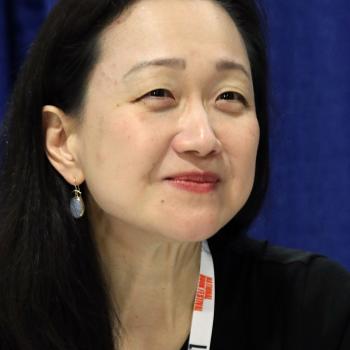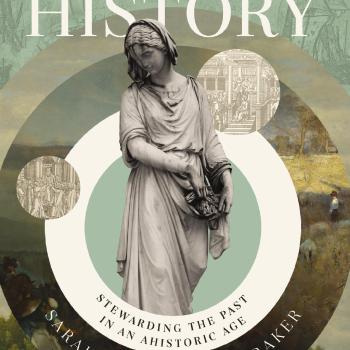This fall, I am teaching the most pedagogically challenging course of my short teaching career. Earlier in my tenure as a seminary professor, I expected that upper-level electives in the Master of Divinity program, doctoral reading seminars, and classes that stretched beyond my primary areas of teaching competency would provide the biggest challenges in course planning and preparation. Over the past eight years, I have taught courses that fall into each of these categories. This coming semester, I am slated to teach Survey of Church History in the undergraduate program on our campus. Teaching this one semester overview of the entirety of the history of Christianity is a daunting task for several reasons.
First, a course that covers over two thousand years of history in fifteen weeks rankles some of my historian’s sensibilities. Although observation of trends and patterns remains an important aspect of the historian’s craft, with every generalization or simplification, I am dogged by my training which naggingly insists that I present history with nuance and precision.
Second, with the beginning of the semester a mere two weeks away, I am still furiously whittling my list of lecture topics, struggling to determine which “high points” I will cover, which ones I will excise, and how I will simplify without oversimplifying or crossing over into misrepresentation. There is simply too much important history–decisive events–to cover.
Third, choosing a textbook proved especially challenging. Although imperfect, Justo Gonzalez’s two volume The Story of Christianity still fits nicely into the standard seminary Church History I/Church History II sequence. Recently, other alternatives for those courses have emerged as well. Zondervan finally published Church History, Volume II: From Pre-Reformation to the Present Day (2013), the companion volume to the excellent first volume by Everett Ferguson. Further, with the second volume (of three) in Dale Irvin and Scott Sunquist’s History of the World Christian Movement now in print, that series could be adopted as well–if the instructor were willing to supplement the second volume with material to cover the period from 1800 to the present. (Hopefully, the third volume will follow shortly.)  However, none of these multi-volume textbooks work well for a single-semester course. Nearly 1,000 pages of textbook reading is too much for an introductory-level undergraduate course. For that reason, I also ruled out Diarmaid MacCulloch’s Christianity: The First Three Thousand Years.
However, none of these multi-volume textbooks work well for a single-semester course. Nearly 1,000 pages of textbook reading is too much for an introductory-level undergraduate course. For that reason, I also ruled out Diarmaid MacCulloch’s Christianity: The First Three Thousand Years.
Instead, I sought a single-volume text which could be supplemented with primary text readings. With the rise of Christianity in the global South before my eyes and the work of Philip Jenkins whispering in my ear, I wanted a text that transcended–at least to some degree–the myopic emphasis on Western Christianity so common in English-language church histories.*
My quest proved disappointing. Standard single-volume treatments, such as Cairns and Shelley, move from Palestine, to the Roman Empire, and to Europe, before culminating in America. The global nature of Christianity gets some coverage in the end but not nearly enough. Rodney Stark’s The Triumph of Christianity follows roughly the same trajectory. Noll’s Turning Points made my short list as did Robert Bruce Mullin’s A Short World History of Christianity. In the case of Noll’s book, I feared the text too closely mirrored the hit-the-high-points approach I will (by necessity) employ in my lectures and class discussions. In Mullin’s case, although my confessional sensibilities quibbled with some of his interpretive decisions, the ultimate decision was more subjective. In the end, I simply preferred a different book (although not by much).
Ultimately, I selected The Christian World: A Global History by Martin Marty. Not without its own faults, Marty’s short history keeps the global nature of Christianity before the reader at all times as the story moves from Asia, to Africa, to Europe, to Latin America, to North America, and back to Africa before concluding in Asia. Further, he provides an accessible, lucid, and even-handed narrative devoid of the triumphalism of some evangelical texts and the criticisms of Christianity that so often appear in non-evangelical texts. The brevity of The Christian World provides an added benefit: it allows me to assign significant supplemental texts and primary source readings. Although I am sure it will not be perfect, I am looking forward to using it this semester. Check back in January and I will let you know how it worked out.













